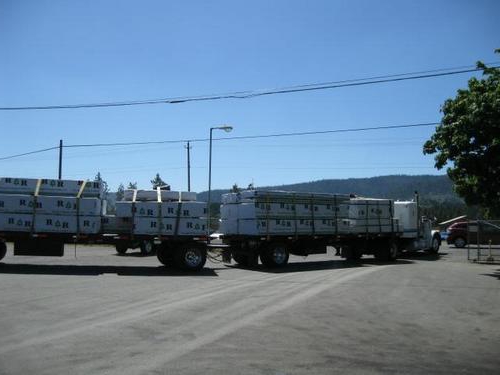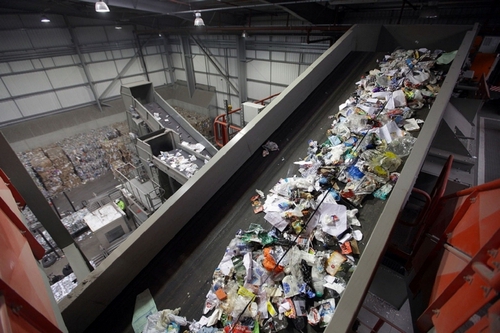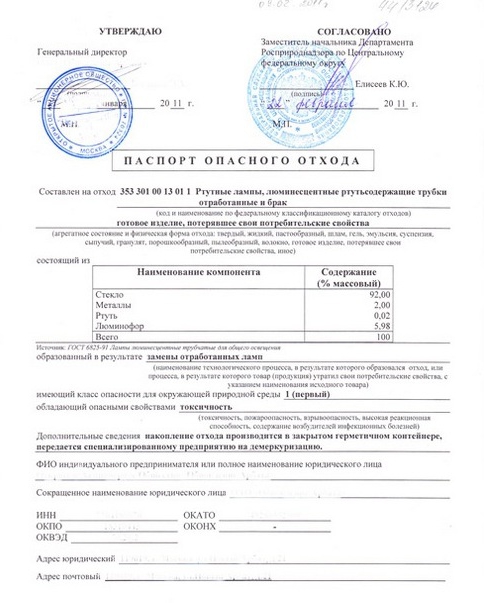One of the most pressing problems that many enterprises need to solve is the certification of waste. This procedure is accompanied by a number of difficulties and ambiguities. Let us further consider how to draw up an accompanying passport for the transportation of production waste. 
The legislative framework
Federal Law No. 49 in the Russian Federation was ratified by the Basel Convention. This document controlled the transboundary movement of hazardous waste and its disposal. Further to this Convention, a resolution was subsequently adopted. She also coordinated the organization of transboundary movements of hazardous wastes that are intended for regeneration operations. These documents imply the existence of national legal and regulatory support for the regulation of critical issues related to waste management. In this case, special attention is paid to questions of establishing the degree of danger, as well as the order of certification of substances.
Domestic regulations
Federal Law No. 14, which regulates the sphere of consumption and production waste, establishes requirements for compiling a passport. When preparing a document, in accordance with the law, information on the properties and composition of substances, as well as indicators for assessing their harmfulness, are used as basic information. The procedure in accordance with which the certification of waste is carried out is established by the Government of the Russian Federation. In pursuance of the Government Decree regulating the rules of conduct of state. inventory of hazardous and harmful substances The Ministry of Natural Resources of the Russian Federation issued an Order. This document defines the procedure for implementing the above Resolution. 
GOST
The Interstate Standard establishes and clarifies a number of terms. In particular, the document says that:
A hazardous waste passport is a machine-oriented information and regulatory document. It contains data on the composition of substances, types or type (class) of harmfulness. Waste passport (a sample act can be found in the article) includes information on possible technologies for resource-saving and safe handling of compounds.
The GOST also defines the procedure for processing the document in question. In particular, the standard clarifies that certification is certain actions that are performed sequentially and relating to the identification, according to the technological and physico-chemical description of the properties of, including, substances at the stages of the technological circulation cycle. The procedure is carried out in accordance with the information provided for the safe and resource-saving regulation of activities in this area. 
Important point
The procedure in accordance with which the development of waste passports is carried out is provided for in GOST 30774-2001. This interstate standard applies to all types of harmful substances, except for radioactive compounds. Responsibility for the accuracy and completeness of the information included in the waste passport, as well as measures to ensure safety during their storage and use, lies with the management of the enterprise in whose territory these substances are located.
Document structure
According to GOST 30774-2001, the waste passport must contain the following sections:
- The names of the substances.
- Details and name of the enterprise producing the compounds.
- Number of waste subject to certification.
- The origin of the substances.
- The composition of the waste, the harmfulness (toxicity) of its components.
- The reactivity of substances.
- Recommended recycling method.
- Explosion and fire hazard of waste.
- Corrosion activity.
- Necessary safety measures when handling waste.
- Established restrictions on the transport of substances.
- Additional information.

The waste passport must be signed by the head of the enterprise. Upon receipt of new or additional information that helps to increase the completeness and reliability of the information contained in the mandatory sections, the document must be updated and re-registered with the amendments.
Instructions for filling out the waste passport
Rosprirodnadzor acts as a controlling organization, whose competence includes checking the correctness of registration and compliance of data with reality. The form of the document, as well as instructions for filling it out, was approved by the Order of the Ministry of Natural Resources of the Russian Federation. The waste passport is compiled for substances belonging to classes 1-4, which have properties that threaten the health and life of people. The form of the document is filled out separately for each type of substance. The name and code of the waste are given in the passport in accordance with the federal classification catalog. Harmful properties are indicated in accordance with the requirements of GOSTs or the Basel Convention.
Document Approval
According to the Order of the Ministry of Natural Resources, the waste passport must be approved by the territorial body of the specified Ministry in the corresponding constituent entity of the Russian Federation. According to GOST 30774-2001, the accuracy of the information provided in the document is legally confirmed during its registration. The authorized body is the appropriate authority, defined by federal law, or the local (regional) authority in the territory of which the waste is located or imported. Currently, registration is carried out by Rostekhnadzor (according to the Government Decree). 
Determining the degree of threat of substances to be documented
In the Introduction to GOST 30774-2001 it is indicated that the waste can be recognized as hazardous after determining the degree and type of hazard, that is, after their certification. The class of threat to health and life is determined by the level of probable negative impact. In the criteria for classifying substances in one category or another, 5 hazard groups are established. Sanitary rules provide for hygienic requirements and principles for determining the class of hazardous waste. This normative act establishes 4 classes. Thus, the determination of the degree of harm of substances is carried out according to different criteria. The most appropriate can be considered the position of the MPR. In accordance with it, all waste is divided into five classes, while the passport is issued for substances of 1-4 cells, which are indicated in the FWCC and have harmful (life-threatening and health) properties.
Document Validity
According to GOST 30774-2001, the waste passport is considered to be expired after a calendar year from the date of registration in the absence of changes in the technological regulations of the process during which these substances were obtained. For fixed processing products, the validity of the document in accordance with the draft standards for the formation of substances in the enterprise and limits on the placement of compounds could be considered logical. In other words, for this position it would be supposed to coordinate the passport once every 5 years. 
Finally
In addition to the difficulties mentioned above in the process of determining the category and class of waste to be documented, there are a number of other unresolved issues regarding the compilation of a passport. These, in particular, include:
- Validity of the document.
- Uncertainty when choosing a regulatory act that is a priority - an order of the Ministry of Natural Resources or requirements of GOST.
- The fate of the waste that was not included in the FWCC and other issues.



